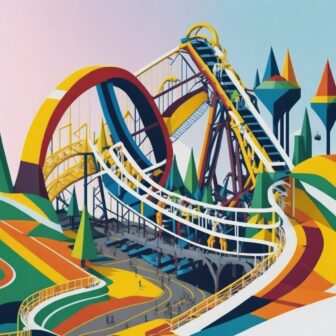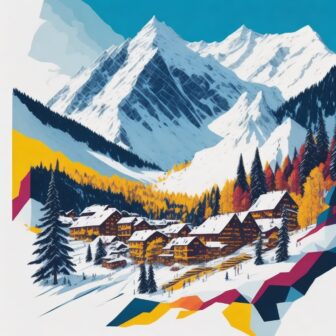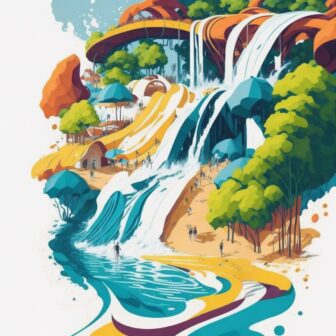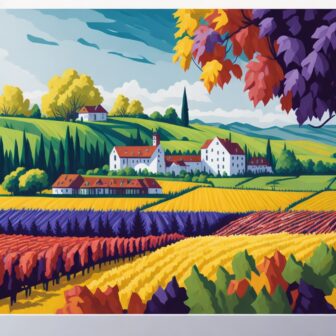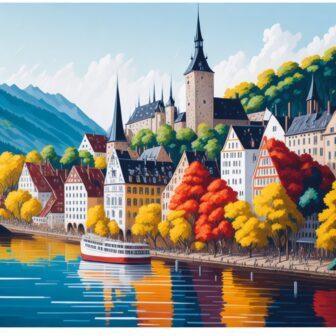14 Days in Germany The Perfect Itinerary (2023)
As you’ll learn on this epic road trip of 14 Days itinerary in Germany, that peels back the layers and exposes you to a smorgasbord of delicacies, treasures, and temptations, Germany is a wonderful country with interesting cities, soul-stirring landscape, historic landmarks, and spirit-lifting culture.
14 Days in Germany The Perfect Itinerary - Munich to Berlin - Top of the Top
Munich, Germany
Start your tour in Munich, which has some of the best art museums in the nation, a sizable city park, royal mansions loaded with artifacts, and, of course, the Hofbräuhaus, the most renowned beer hall in the entire world. Include time in your schedule for the lovely town hall carillon, the abundant traditional food market, and the adrenaline-pumping BMW Museum.
From Munich to Garmisch-Partenkirche you get in 1.5 hours by car via A95 & B2 or in 1.5 hours by train.
Garmisch-Partenkirche, Germany
In Garmisch-Partenkirchen, take in the clean mountain air before being taken aback on an exhilarating ride up the Zugspitze, Germany’s highest peak, in a train and cable car combination that is an engineering marvel. In a bar filled with trinkets, return to earth while sharing a sumptuous roast pork supper and foaming cups of beer.
From Garmisch-Partenkirche to Füssen you get in 1 hour by car Via Austria or in 2 hours by bus.
Romantic Road in Germany
The name is self-explanatory, and the truth is even better. Be enchanted by this dazzlingly old-world ribbon of wealth that begins at the legendary Schloss Neuschwanstein and ends 350 kilometers later in Würzburg, a city renowned for its wine, bishops, and stately architecture. You’ll pass through lyrical landscapes, historic villages with ramparts around them like Dinkelsbühl and Rothenburg ob der Tauber, lordly castles, and other stunning scenery on your journey.
From Füssen to Heidelberg you get in 1 hour by car Via Austria or in 2 hours by bus.
Heidelberg, Germany
The oldest university in Germany charms with a captivating fusion of nature, vibrant modern life, and history. It’s a magical location with a lively, international, and romantic ambiance. Don’t skip the magnificent and improbably romantic castle tour.
From Heidelberg to Mainz you get in 1.5 hour by car via A67 or in 2 hours by train.
RELATED:
Best Places to Visit in Heidelberg
Best Hotels in Heidelberg
Romantic Rhine, Germany
The Romantic Rhine is a captivating combination of steeply terraced vineyards, jagged cliffs topped by powerful medieval castles, and jumbled settlements. Start in Mainz, home of Johannes Gutenberg, inventor of the moveable type, and see the magnificent museum there. As you follow the river north, take your time taking in the scenery and the local wine, possibly stopping in picture-postcard Boppard and fantasy-like Bacharach. Don’t forget to greet the Loreley as well.
From Mainz to Cologne you get in 3.5 hours by car via L419, B9, A3 or in 2.45 hours by train or in 11.5 hours by ship.
Cologne, Germany
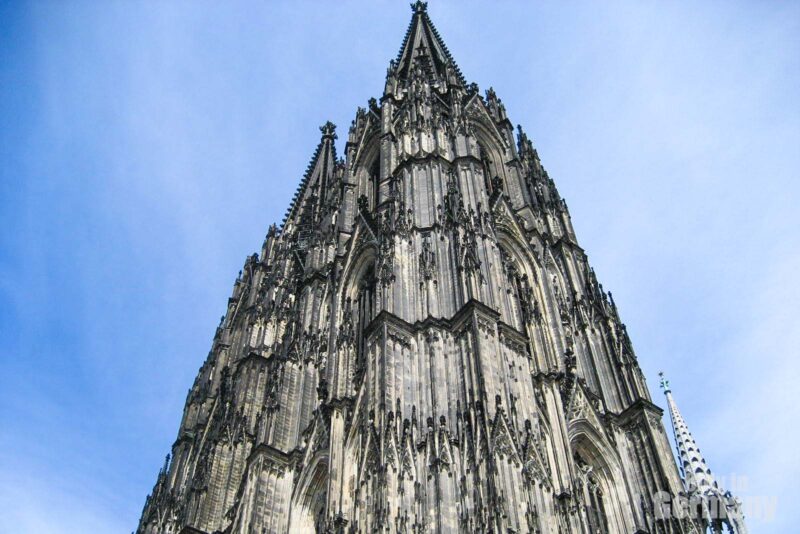
The imposing Kölner Dom, Cologne’s magnificent cathedral, personifies the city’s contagious energy. Climb to the peak for breathtaking vistas, then explore the Römisch-Germanisches Museum for Roman relics or the Museum Ludwig for stunning paintings. Finish in a beer hall with Rhenish cuisine and a refreshing Kölsch beer.
From Cologne to Hamburg you get in 4.5 hour by car via A1 or in 4 hours by train.
RELATED
Best Places to Visit in Cologne
10 Days in Germany The Perfect Itinerary
5 Days in Germany The Perfect Itinerary
Hamburg, Germany
Spend a day or two studying the global Hamburg. It’s a city that, under the same self-assured umbrella, cradles an elegant center, the edgy new waterfront HafenCity neighborhood, the red-brick Speicherstadt warehouse area, and the Reeperbahn, a red-light district.
From Hamburg to Berlin you get in 3.5 hour by car via A24 or in 2 hours by train.
Berlin - Capital of Germany
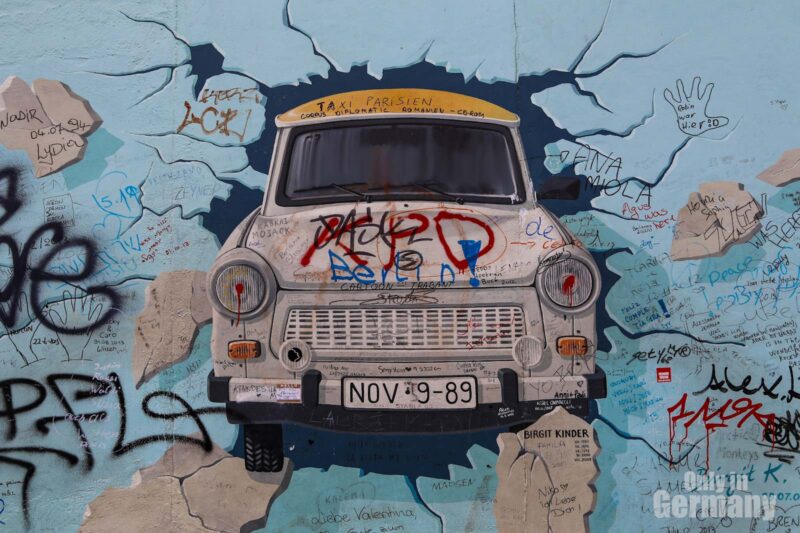
A quarter of a century after the fall of the Berlin Wall, Berlin is a vibrant mix of glitz and grit, brimming with world-class art galleries and museums, huge operas, hot-stepping dance clubs, gourmet restaurants, and ethnic snack stands. You can satisfy your tastes in the German capital, whether they are posh or punk.
For your last location on your 14 days in Germany itinerary I have put together for you a walk through Berlin that runs from the main train station to Alexanderplatz and covers around 3.7 miles / 6 kilometers. You can do it in one day or two or three days with or without visiting museums and in-depth sightseeing.
You leave the main train station on the south side, Washingtonplatz, and walk over the pedestrian bridge in the direction of the Reichstag, between the Chancellery and the Paul-Löbe-Haus, in whose huge glass facade the Chancellery is reflected. Turn left behind the Paul-Löbe-Haus and walk to the Spree.
On the other side of the river you can see the Elisabeth-Lüders-Haus, with the parliamentary library, and the two bridges that connect the former West and East Berlin. The wall followed the Spree for a while here, at this point there was only one wall on the other bank, the river formed the second barrier. Crosses on the shore remind us of failed escape attempts. Go back and pass in front of the Reichstag.
Follow the diagonal path through the Tiergarten towards the Brandenburg Gate. The memorial to the murdered Sinti and Roma is hidden behind the wall on your left.
On the way to the gate you cross the recessed strip of cobblestones that marks the course of the wall. Until 1989, the gate was in the middle of no man’s land between East and West, within the walls, and Pariser Platz lay in rubble and ashes. Built between 1788 and 1791 by Carl Gotthard von Langhans, the gate served as a replacement for an old city gate in the customs wall on the road to Brandenburg. The customs officers sat in the side wings. Langhan’s model was based on the Acropolis in Athens.
The Quadriga from Schadow was taken to Paris in 1806 under Napoleon’s rule, but Blücher’s troops found it still packed in crates in 1814, loaded it up and brought it back. After the Paris adventure, people simply called her the tit-for-tat. From here you can see the victory column in the Tiergarten, from which you can also enjoy a great view once you have climbed it. Up close you can see the angel that appears in Wim Wender’s “The Sky over Berlin”.
Pariser Platz was rebuilt except for parts of the old Academy of Arts, which were integrated into their new building. It offers interesting architecture, a cafeteria, a book counter and changing exhibitions. The house on the right is Frank Gehry’s DZ-Bank. According to the principle of contrasts, expressionist architecture is hidden behind the sober façade. When it is accessible (therefore no events or receptions are taking place), the statue of the whale can be seen in the courtyard, rising out of the water and carrying a small conference hall in its mouth.
Returning through the Brandenburg Gate, with the American Embassy on your left, you come to the Holocaust Memorial in memory of the murdered Jews of Europe. Over 2700 steles stand on a wavy terrain. At the end of the field of stelae is the documentation center, including a database. The free visit is possible at any time of the day.
Opposite, on the right in the Tiergarten, there is a small memorial for the murdered gay people.
Keep walking towards the skyscrapers, you can’t miss Potsdamer Platz. The street crossing lay in no man’s land for decades, but Potsdamer Platz used to be the busiest square in the city.
The “Verkehrsturm“, the first traffic light in Germany (erected in 1924) was rebuilt. Here a policeman watched the traffic from the window and directed it. The tower and the various amusement venues on Potsdamer Platz are beautifully described in Franz Hessel’s newly published “Walking in Berlin” from 1929.
Along the street there are pieces of wall that mark the course of the wall. Behind, in front of and in Helmut Jahn’s Sony Center you can see the walls of a suite from the Hotel Esplanade behind glass on the right. In the 1920s it was one of the most famous hotels in the city. Largely destroyed, the ruins also served as a film set in “Himmel über Berlin”, in which you can also see the whole area around Potsdamer Platz as it looked in the mid-1980s, i.e. empty.
The Kaisersaal and some ceilings, chandeliers and railings that were integrated into the Sony Center also come from the Esplanade.
You can partially see them in the bars when you walk towards the pond in the middle under the sloping dome called Fujiyama. The apartments above are suspended from a steel bridge between two high steel constructions. A part of the outer facade of the old Esplanade became the outer wall of the Sony Center, also behind glass; it is easy to see when you go through the exit on the right in front of you into Bellevuestrasse and walk back in the direction of Potsdamer Platz.
You continue at the Kollhoffhaus, which is reminiscent of Chicago in the winter of the 1930s. Here you will find elevators to Panoramapunkt, where two surrounding terraces ensure a beautiful view.
Marlene-Dietrich-Platz is the center of the annual film festival in February, when film people, the press and visitors swarm everywhere.
Renzo Piano and, under his direction, architects from all over the world have immortalized themselves in this large area. All buildings are clad in terracotta, which gives the different architecture a uniform touch and warm colors.
The walk continues in the direction of Stresemannstrasse, turn left into Niederkirchner Strasse with the Martin-Gropius-Bau on the right. Behind is a piece of authentic wall, badly battered by wallpeckers and therefore fenced off. On the grounds behind where the Gestapo had their headquarters is the free Topography of Terror exhibition. Photos of the SS, Gestapo, persecution, extermination, the end of the war and the post-war period as well as many portraits are shown.
On the left is the Ministry of Finance, built in the 1930s as the Reich Ministry of Aviation. Further straight ahead you will see the Trabis on the left, which you can drive yourself on a Trabi safari, and the world balloon, with which you can climb to a height of 150 meters when the weather is calm.
“Octopussy” with Roger Moore as James Bond and “The Spy Who Came in from the Cold” by John le Carré are set at Checkpoint Charlie, a former border crossing. Everywhere you see photos on the subject of the Cold War and the fall of the Berlin Wall.
A smorgasbord of getaway vehicles and many other photos can be found in the Wall Museum. Continue up Friedrichstrasse to Mohrenstrasse, turn right and walk to Markgrafenstrasse, then Gendarmenmarkt, Berlin’s most beautiful square, is on the left. In the middle is the concert hall between the German and the French cathedral, which bears witness to the immigration of the Huguenots.
Turn right on Französische Straße and then left again, and you will pass the rebuilt St. Hedwig’s Cathedral. On Bebelplatz, a window set into the floor, through which an empty library can be seen, commemorates the book burning of 1933. In front is Unter den Linden boulevard, in the middle, on your left, Rauch’s equestrian statue of Old Fritz on his favorite horse Condé.
Opposite is the Humboldt University, where Johann Gottlieb Fichte taught and where Karl Marx, Otto von Bismarck and Albert Einstein studied. Next to it, in the direction of Alexanderplatz, is a sculpture by Käthe Kollwitz in the Neue Wache.
This is followed by the armory and the German Historical Museum. On the left, at its back, you can see the addition of I.M. Pei: the glass snail, with the rounded entrance hall with light and shadow games. Walk behind the extension and continue over the bridge towards Museum Island.
Via the Lustgarten, past the television tower, you finish your 14 days in Germany itinerary in the marvelous Alexanderplatz.

